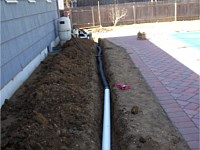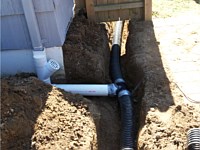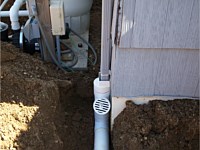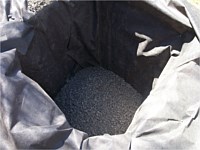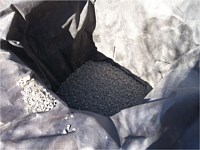Stormwater
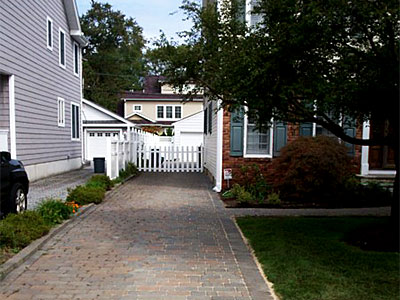 Stormwater is the control of rainwater generated on your property from impervious surfaces such as roofs and driveways. We adhere to Best Management Practices to control most of this rainwater on your property. Some of these practices include permeable paver systems, bio swales, bio retention areas, rain gardens, below grade recharge chambers. These practices are ideal for both residential and commercial properties. Additionally these devices can also be used to manage poor drainage areas. Permeable paver systems are also ideal for reducing the amount of impervious lot coverage without losing driveways and parking areas.
Stormwater is the control of rainwater generated on your property from impervious surfaces such as roofs and driveways. We adhere to Best Management Practices to control most of this rainwater on your property. Some of these practices include permeable paver systems, bio swales, bio retention areas, rain gardens, below grade recharge chambers. These practices are ideal for both residential and commercial properties. Additionally these devices can also be used to manage poor drainage areas. Permeable paver systems are also ideal for reducing the amount of impervious lot coverage without losing driveways and parking areas.When it rains what happens to all that the entire water landing on your property? A one inch rain storm produces 632 gallons of stormwater off of every 1000 square feet of impervious surfaces like your roof, driveway and patio. Where does all that water go? For years the accepted approach was to get that water away from your house and off your property as quickly as possible carrying with it all the pollutants, sediments and debris directly into our streams, lakes, rivers and coastal bays. As we can see now that creates issues with the quality of those waterways whether it is erosion & sedimentation, nitrogen & phosphorous overloading or unhealthy levels of pathogens & pollutants. Today following what the EPA defines as Best Management Practices we want to slow that water down and stop runoff from our properties allowing stormwater to recharge back into the ground and eventually the groundwater. Best stormwater management practices include: Permeable Paver Systems, Bio Retention Basins, Bio Swales, Subgrade Recharge Voids, Bio Swales and Rain Gardens. By following BMPs we can stop Nitrogen, Phosphorous, Sediments, Pathogens and Pollutants from entering our waterways and all the negative effects they have there.

Permeable Paver Systems
A system of specially designed interlocking concrete pavers set on a base of varying gradations of clean angular stone. The base voids allow a large quantity of stormwater to be held and either recharged into the ground or slowly diverted to another stormwater management device. Joints between the pavers are filled with an even smaller gradation of angular stone allowing for a very large and quick infiltration of stormwater. The real benefit of Permeable Paver Systems is in reducing lot coverage while still allowing use as driveways, parking areas and low traffic weight and volume streets.Bio Swales
A low cut trench with either one or two sloping sides generally incorporated into an existing landscape. The cut trench is filled with angular trap rock that slows the flow of stormwater allowing recharge to ground, reduction of sediments and elimination of some pollutants. These swales may or may not include an exfiltration pipe to another stormwater management device.Bio Retention Basins
Similar to bio swales but generally much larger these basins incorporate angular trap rock of varying gradations in layers for storage of large amounts of stormwater. Again this allows recharge to ground and filtering of sediments and pollutants. Covering the rock storage area is well draining soil in which water tolerating vegetation is planted. Again exfiltration pipes may be included.Subgrade Retention Chambers
Manufactured void spaces surrounded by angular trap rock with stormwater directly piped in allowing it to recharge into the ground. These chambers are usually made from plastic or concrete as they must be able to support the soil loads placed above them.Flo Wells and Pop Up Emitters
The most commonly used residential stormwater management devices. A Flo Well is a smaller version of a subgrade retention chamber. A pop up emitter is a device placed at the end of a buried pipe coming off a downspout the top pops when enough water pressure builds up behind it. Pop up emitters are generally located on top of a small dry well in an area of lawn or landscaped bed. Both these devices should be located at least 10 feet from foundation walls.Rain Garden
A purposefully created depression in an existing landscape planted with water tolerant plants. A small bio retention basin might be incorporated into the garden and a bio swale might direct water towards the garden. Mostly used in residential and park settings.Click on the images below to view a larger display.
|





